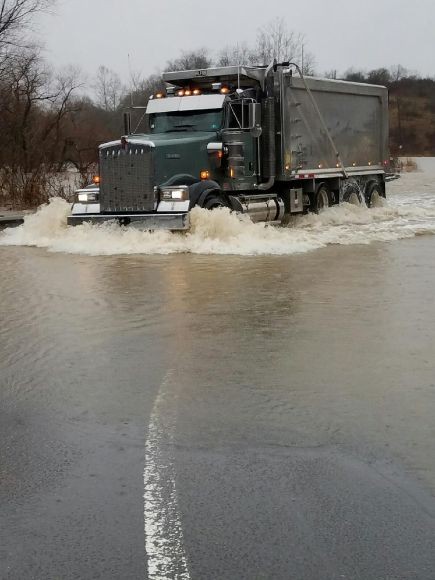MORGANTOWN — When waters begin to rise, they can reach destructive levels far more quickly than many people realize.
Sadly, the Mountain State is no stranger to the damage caused by high, rushing waters. As many West Virginia residents know all too well, once the rain begins to fall and the rivers start to swell, things can go from bad to worse — fast.
That’s why it’s important to be prepared before a flood occurs, as well as knowing what to do during and after a disaster.
To that end, The Federal Emergency Management Agency (FEMA) and the American Red Cross of Northeast West Virginia are working increase flood readiness in the region.
FEMA and the National Weather Service (NWS) have a variety of tools to help you prepare for flooding. Start by being informed — know your risk, where turn for the latest information, and what you should do if flooding impacts you.
“Flooding is the most common and costliest disaster in the United States – it can occur in any community at any time. In a flood, your life depends on being prepared which is why we encourage individuals, commuters, families, and communities to prepare,” FEMA Region III Regional Administrator MaryAnn Tierney said.
A good place to start, according to FEMA officials, is by knowing the terms agencies use to report flooding and flooding risks and what they mean.
- Flood Watch — flooding is possible; remain alert and stay tuned to official information sourcesfor the latest.
- Flood Warning — flooding is occurring or will soon; take action now, move to higher groundand take steps to stay safe.
- Flash Flood Warning — a flash flood is imminent or occurring; take action now and move immediately to higher ground.
- Flood Advisory — flooding is not expected to be bad enough for a warning; remain alert.
According to the Red Cross, the next step one must take is to create an emergency preparedness kit, keep it up to date and ensure it is kept in an easy-to-access location that won’t be affected if waters begin to rise.
For a list of must-haves, as well as additional items that you may need, depending on your circumstances, go to redcross.org/get-help/how-to-prepare-for-emergencies/survival-kit-supplies.
For homeowners who live on flood plains, you should also make sure you have and understand your flood insurance plan. Flood insurance is not covered under standard homeowners’ policies.
The Red Cross also recomends being familiar with your community’s flood response plan.
Also, if you have animals, be they pets or large animals such as cows, sheeps, etc., have a plan in place to evacuate and house them. Waiting until the last minute could be dangerous — even fatal — for them, and for you.
Once the water rises
FEMA stresses that when water starts to rise, people — along with their pets — should head for higher ground immediately.
Follow official sources for weather updates as well — as rain continues to accumulate, water may rise and inundate streets and bridges, FEMA notes. Do not attempt to cross flooded roads — just one foot of water can sweep your vehicle away and it can be difficult to determine how deep the water may be.
Also, if you come into contact with flood water, make sure to wash thoroughly afterward. It could be contaminated with sewage and make you and your family sick.
Keep in mind:
- 6 inches of water can knock a person down
- 2 feet of moving water can sweet away a vehicle
More resources
To be best prepared to handle a flood at any stage, FEMA has created several easy-to-navigate websites. For more information, try these links:
- Ready.gov/flood-toolkit — features resources, graphics and social media contact to help spread the word and keep in contact with loved ones.
- Weather.gov/safety/flood-map — National Weather Service’s Interactive Flood Information Map, allows users to review flood information for their state
- Download the FEMA mobile app (available in English and Spanish) to create custom chekclists, maps, tips and weather alerts for your area.




